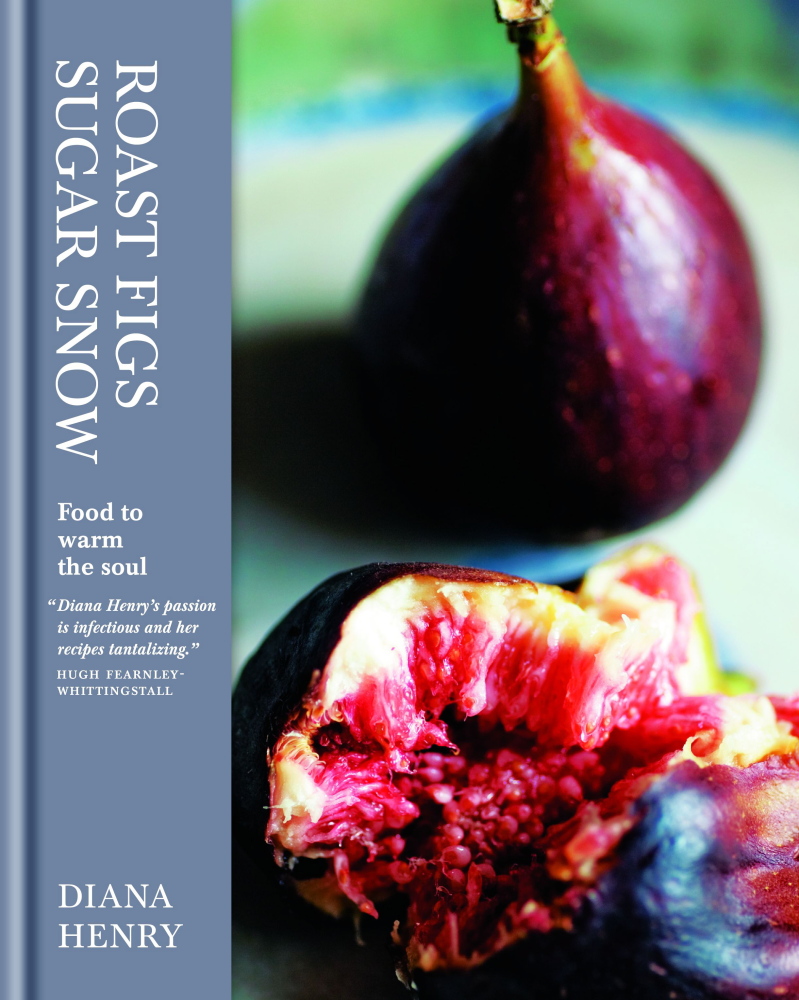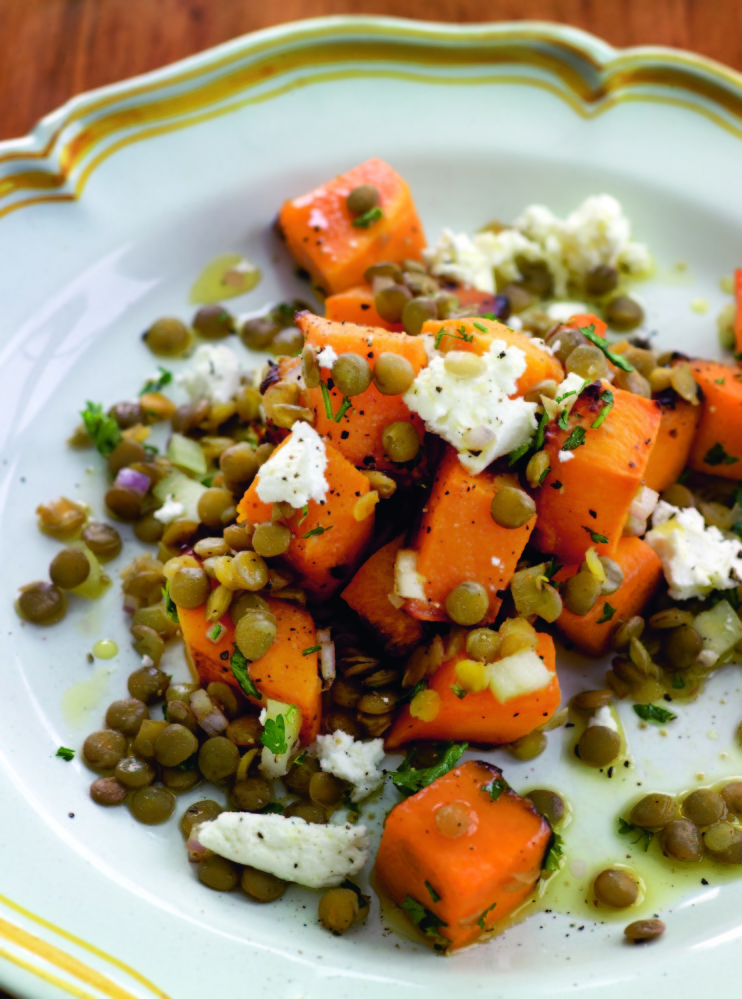British cookbook writer Diana Henry had me at the name – “Roast Figs Sugar Snow: Food to Warm the Soul.” Evocative, rhythmic and, on a cold, dark winter day in Maine, deeply compelling.
The chapter titles similarly seduced this former English major: “Ripe and Ready” (cheese), “The Fat of the Land” (pork), “From Bush and Bog” (cranberries, blackberries, sloes and rose hips). If you are the sort of cookbook fan who is drawn in by photographs (and who isn’t?), you’re in luck, too. The book has plenty of them, and they’ll make you want to get into the kitchen and cook.
“Roast Figs Sugar Snow” is not new. It was first published in Britain in 2009. But, last fall, it was revised and reissued in the states. I missed it the first time around so I was happy to see it land on my desk now.
Northern cuisine is having its moment – traceable, perhaps, to Noma Restaurant in Copenhagen, which four times in the last five years (including this year) was declared the Best Restaurant in the World on an influential annual list published by Restaurant magazine. Scads of articles and more than a few cookbooks about New Nordic food have followed. Rye, horseradish and smorrebrod have become markers of culinary cool.
The Scandinavia effect has rubbed off on northern food in general (think hard cider or kale): Henry’s book encompasses recipes from Austria, Switzerland, Northern Italy and North America (maple syrup gets the allusion in the title and a chapter of its own). This is all excellent news for Maine cooks.
Usually, I tag recipes in a new cookbook that I hope to try. I didn’t bother in this case as I’d have to tag most of them. Just now I opened it at random three times and three times hit the mark: Salad of Smoked Duck with Farro, Red Chicory and Pomegranates; Styrian Venison with Chestnuts, Cranberries and Wild Mushrooms; Quebecois Mussel Chowder with Cod and Cider.
The recipes are carefully written and answer questions a cook might have as she is prepping and poaching. When sautéing a rabbit, “You want to get a bit of color on the outside, not to cook it through.” If the fruit sticks when you turn out Pecan and Pear Upside-Down Cake, “carefully lever the pears off the pan and lay them on to the cake with their dark, caramelized side upward.” And so on.
That said, pan sizes are often not standard for American cooks, and a kitchen scale will come in handy. Granny Millar’s Wheaten Bread, for instance, calls for a 1-pound loaf pan, while Cafe Sperl’s Plum Squares (officemates rhapsodized over these) calls for an 8- by 12-inch pan. Similarly, a trifle recipe specifies 1 pound 2 ounces of “good-quality fresh custard”; can you buy it this way at a grocery store in London? I don’t know, but for American home cooks, a recipe, or at least a cup measurement, would have been helpful.
For me, though, that’s a quibble. It’s not easy for a cookbook to earn a berth on my exceedingly overstuffed shelves. “Roast Figs Sugar Snow” has.
— PEGGY GRODINSKY
Roast Winter Squash Salad with Lentils and Goat Cheese
From Diane Henry’s “Roast Figs Sugar Snow.” I cooked the lentils in chicken stock instead of water and served the salad on a bed of arugula. My scribbled note on the page says “excellent.”
Serves 6
3 pounds 5 ounces (1.5kg) winter squash, such as butternut or acorn
Salt and pepper
Olive oil
2 tablespoons butter
9 ounces (250g) goat cheese, broken into small nuggets
FOR THE LENTILS:
93/4 ounces (275g) green lentils, Puy or Umbrian
1/2 small onion, very finely chopped
1 small celery stalk, very finely chopped
1 tablespoon butter
1/2 tablespoon olive oil
11/2 tablespoon finely chopped fresh flat-leaf parsley
FOR THE DRESSING:
1/2 tablespoon white wine vinegar
Tiny dollop Dijon mustard
1/4 cup extra-virgin olive oil
Good pinch superfine sugar
Preheat the oven to 350 F. Halve the winter squash and scoop out the seeds and fibers. Cut each half into 1-inch wedges and then peel each one. You should have about 2 pounds (900g) of prepared flesh.
Put the squash wedges in a roasting pan, season, drizzle with olive oil and dot with butter. Roast for 15 to 20 minutes, turning the wedges over in the fat from time to time until the squash is just tender. Don’t let it scorch or get too dry.
Prepare the lentils while the squash is cooking. Rinse, then cover them with cold water, bring to a boil, and cook until tender, which can take anything from 15 to 30 minutes. The lentils should hold their shape, so keep checking them. While the lentils are cooking, gently sauté the onion and celery in the butter and oil until they are soft but not colored.
Make the dressing by whisking all the ingredients together. Season.
When the lentils are cooked, add them to the pan of onion and celery and stir them around to soak up the cooking juices. Add two-thirds of the dressing and the chopped parsley and season really well with salt and pepper.
Put a small mound of lentils on each plate and top with the roast pumpkin, cut into cubes if you prefer. Dot with the nuggets of goat cheese, drizzle each plate with the remaining dressing, and serve.
Send questions/comments to the editors.



